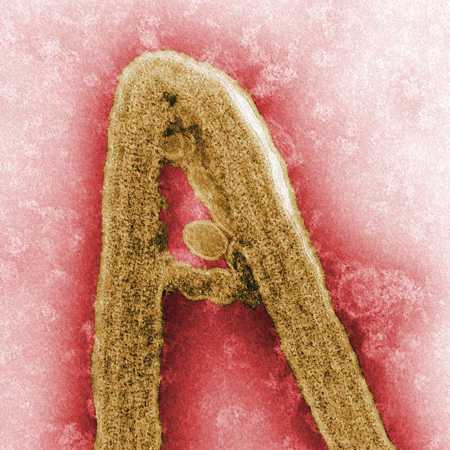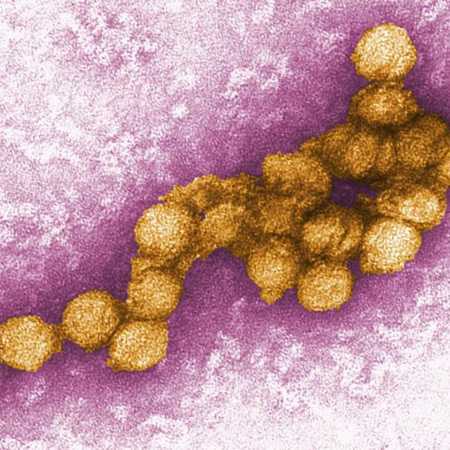Virus Families
VHFs are caused by viruses of five distinct families: Arenaviridae, Bunyaviridae, Filoviridae, Flaviviridae, and Paramyxoviridae. Each of these families share a number of features:
- They are all RNA viruses, and are all covered, or enveloped, in a fatty (lipid) coating.
- Their survival is dependent on an animal or insect host, called the natural reservoir.
- The viruses are geographically restricted to the areas where their host species live.
- Humans are not the natural reservoir for any of these viruses. Humans are infected when they come into contact with infected hosts. However, with some viruses, after the accidental transmission from the host, humans can transmit the virus to one another.
- Human cases or outbreaks of hemorrhagic fevers caused by these viruses occur sporadically and irregularly. The occurrence of outbreaks cannot be easily predicted.
- With a few noteworthy exceptions, there is no cure or established drug treatment for VHFs.
In rare cases, other viral and bacterial infections can cause a hemorrhagic fever; scrub typhus is a good example.

Arenaviridae
The Arenaviridae are a family of viruses whose members are generally associated with rodent-transmitted diseases in humans.

Filoviridae
Filoviruses belong to a virus family called Filoviridae and can cause severe hemorrhagic fever in humans and nonhuman primates.

Bunyaviridae
The Bunyaviridae are a very large family of single-strand, enveloped RNA viruses and consists of five genera of viruses.

Paramyxoviridae
The Paramyxoviridae are a large family of single-strand, enveloped RNA viruses which causes a number of human and animal diseases.

Flaviviridae
The Flaviviridae are a family of single-stranded, enveloped RNA viruses. They are found in arthropods, and can occasionally infect humans.
- Page last reviewed: June 18, 2013
- Page last updated: June 18, 2013
- Content source:


 ShareCompartir
ShareCompartir